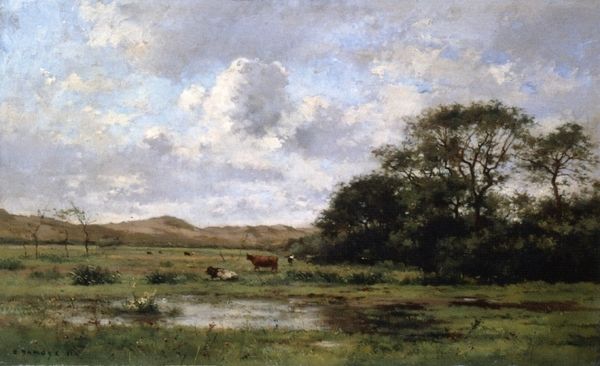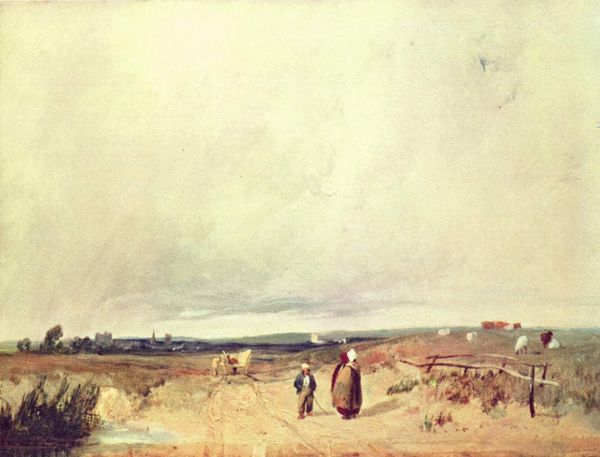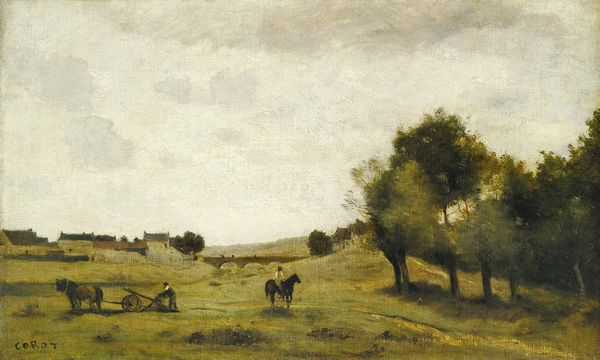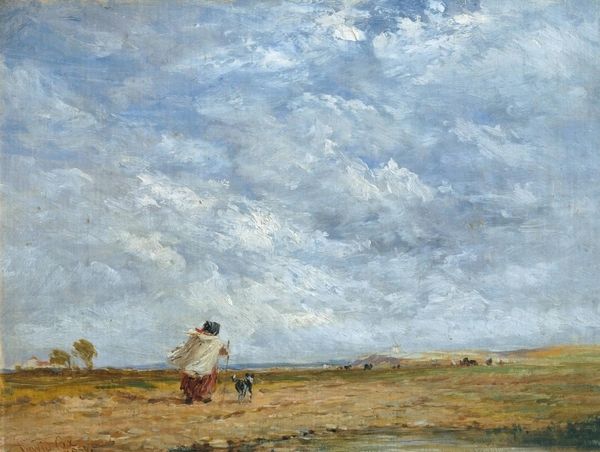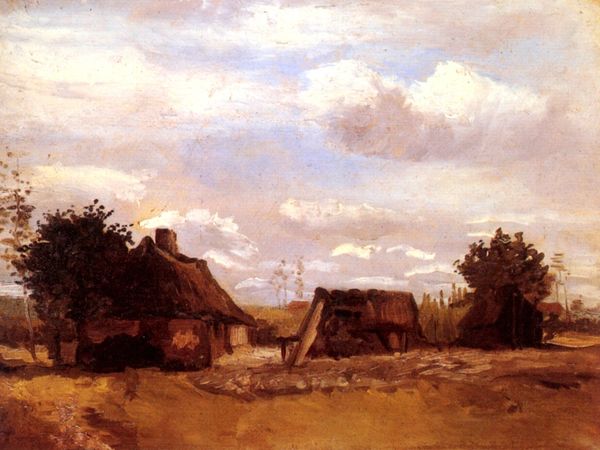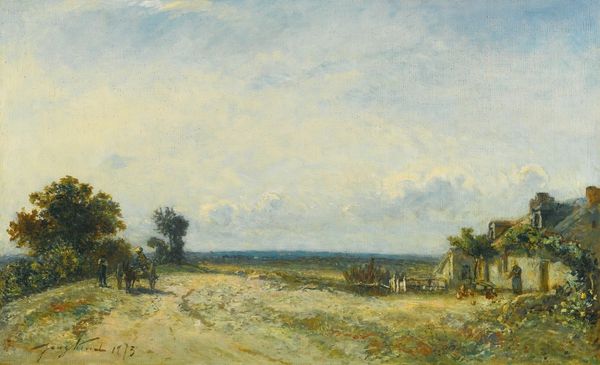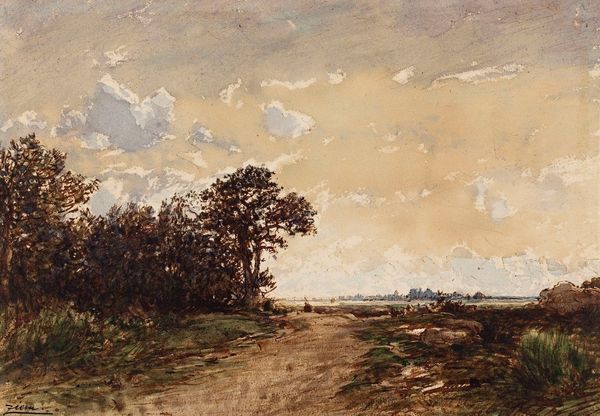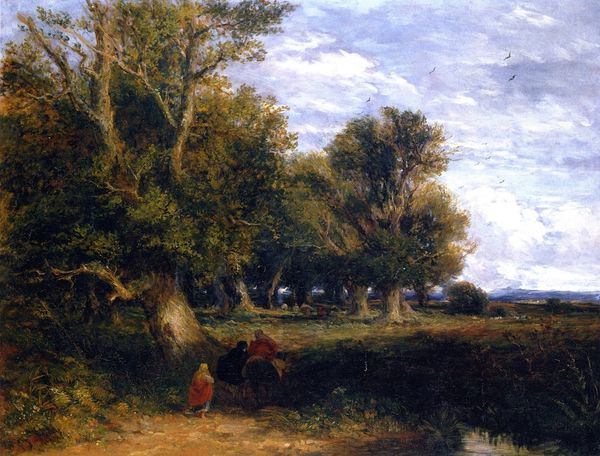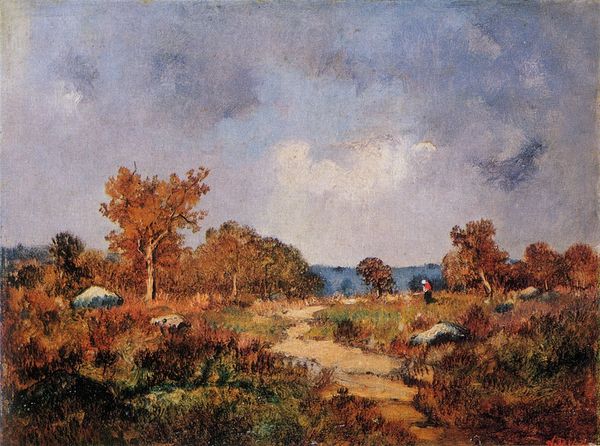
painting, plein-air, watercolor
#
sky
#
painting
#
plein-air
#
landscape
#
oil painting
#
watercolor
#
romanticism
#
cloud
#
genre-painting
#
watercolor
#
realism
Copyright: Public domain
Curator: Looking at this watercolor painting entitled “The Hayfield” created in 1833, one feels instantly transported to the English countryside, wouldn't you say? Editor: It definitely has that bucolic charm. The expansive sky, though—almost overwhelms the working figures in the foreground. There’s a sort of romanticized depiction of labor at play here, obscuring the realities of rural life. Curator: David Cox certainly wasn't shy about idealizing country life. In those days, paintings like these were quite fashionable, but also served a social function; in representing an idyllic countryside, it tacitly encouraged an understanding and acceptance of an older feudal way of life in spite of urbanization. Cox, like many artists of the time, engaged with landscape to promote particular values, whether intentionally or not. Editor: I find myself more drawn to the human presence, albeit subtly rendered. Are these figures idealized, or are they real depictions of rural workers? The distinction is crucial to understanding Cox’s intent, which does become more nuanced upon viewing the painting as a statement about the working class. Were these paintings a means for those living in the industrialized cities to turn towards a vision of purity, one that would not be possible without considering social constructs and power? Curator: It is definitely worth remembering that watercolor painting itself held a specific social position. For instance, its portability facilitated the move towards the practice of “plein-air” painting, of direct observation of the world as it changed; Cox helped to cement that tradition, giving it institutional credibility through his exhibition in galleries and teaching. Editor: Exactly! Art should serve not only aesthetic or decorative functions but, above all, promote education and a questioning approach to existing realities and how it is constructed by societal parameters. Perhaps that’s why it makes me question its contemporary position within today's parameters? Curator: I see your point. The historical importance of art, after all, exists in continuous conversation with our present values. Editor: It's an important painting in the historical context, even if it brings out all the politically charged thoughts.
Comments
No comments
Be the first to comment and join the conversation on the ultimate creative platform.
